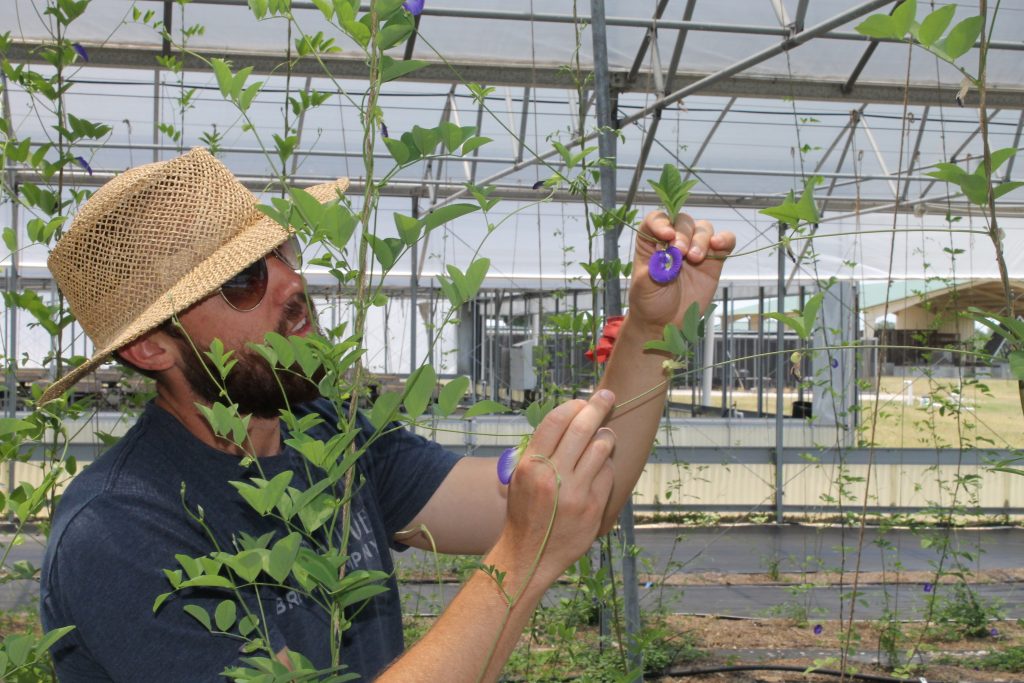It provides a natural food coloring. It gives nurseries another ornamental to grow and sell, and it might provide health benefits to those who eat it with their food. It is the Butterfly Pea, and University of Florida researchers are studying the flower to see if it will grow in Florida.

UF/IFAS photo
Much of what we eat every day contains added color, and those blues, reds and yellows are approved by the Food and Drug Administration. But they’re synthetic, and increasingly, consumers want natural additives, UF researchers say.
“At the UF/IFAS Mid-Florida Research and Education Center (MREC), we are conducting research to position Florida nurserymen and growers to lead the industry in using edible plants and flowers as food colorants and additives,” said Brian Pearson, an assistant professor of environmental horticulture at the center. “As consumers continue to move away from synthetic and toward natural ingredients, the opportunities for Florida agriculture are endless.”
Toward the natural food-coloring goal, UF/IFAS researchers are studying the Butterfly Pea, a flower that’s native to Southeast Asia and is a non-native exotic plant in Florida. Additionally, the Butterfly Pea contains anthocyanin, one of the more common antioxidants, making it potentially beneficial to the consumer’s health, UF/IFAS researchers say.
Pearson supervises the dissertation of Sean Campbell, a doctoral student majoring in environmental horticulture in the UF/IFAS College of Agricultural and Life Sciences. As part of his dissertation, Campbell conducted a literature review, which resulted in this new UF/IFAS Extension document on Butterfly Pea as a food colorant.
Campbell comes to his research on the Butterfly Pea from the UF/IFAS food science and human nutrition department, where he earned bachelor’s and master’s degrees. There, he conducted taste-test panels, among his many student activities. In the food-tasting labs at the UF main campus in Gainesville, Florida, Campbell said he stumbled into the idea of trying to find more natural food coloring.
“There’s a need for, and an interest in, food colorants,” Campbell said, citing recent media reports that focus on consumers’ increasing desire for their food to be colored with a natural pigment.
Pearson agreed, adding: “It’s unique. It’s a niche product. Let’s see if we can grow it. This crop fits in well with our other specialty crops.”
Research into the Butterfly Pea is part of the larger portfolio of medicinal and beverage plant research at UF/IFAS MREC in Apopka, Florida. There, scientists are also studying hops and skullcap, among other plant varieties.
“These crops tap into products that are in sync with larger demand, which can lead to alternate and profitable crops for Florida’s farmers,” Pearson said.
Source: University of Florida Institute of Food and Agricultural Sciences









